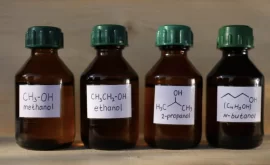DIMETHYL SULFOXIDE CRYOPRESERVATION: A CENTRAL PLAYER
Dimethyl sulfoxide cryopreservation: a new player in long-term storage of biologics.

The demonstration of cryopreservation in sci-fi dramas such as Black Panther and Captain America is fairly overrated. Every time we happen to witness the visual, we are taken back in awe. However, the real science behind this biochemical process is way more interesting than you can imagine.
This scientific innovation is a vital factor that has changed the course of scientific research. Going beyond that, today, several applications, ranging from artificial reproduction and organ transplantations to cell-based therapies and biodiversity conservation, are solely possible because of this one technique. Needless to say, cryopreservation has revolutionized scientific and medical advancements in the 21st century.
What is cryopreservation? What is the physics behind it?
Cryopreservation is the scientific preservation method of keeping live cells, tissues and other biological samples alive by deep-freezing them generally at subzero temperatures. It is accomplished at temperatures as low as −196°C, where all the biological activities of the cells stop and the cell dies. However, by this method, the cells are made to survive by periodic freezing and thawing mechanisms where the freezing rate and freezing medium are accurately chosen and closely monitored.
It is based on the harmless potential of micro substances, which can enter the frozen cells seamlessly and avert cell death and cell destruction, commonly happening at extremely low temperatures. They successfully turn down dehydration and cell crystallization at such critical conditions.
The entire process is facilitated by important agents known as cryoprotectants. Since the beginning of time, medical-grade DMSO has been the ideal choice for sustaining animal cell systems due to its low toxicity, low cost and polar aprotic nature as a virtue of which it can dissolve both polar and nonpolar compounds as well as is compatible with a wide range of organic solvents and with water.
Dimethyl sulfoxide Cryopreservation
The dipolar solvent Dimethyl sulfoxide has contributed to the development of applied cryobiology over the past 50 years. Lovelock and Bishop are credited for being the pioneers who, for the first time, documented the ability of medical-grade DMSO as a cryoprotectant during their experimentation on the cooling of bull sperm.
At any given temperature, Dimethyl Sulfoxide acts cumulatively to depress the freezing point of water. Reducing the electrolytic concentration promotes the vitrification of water in the persisting content and alters the surroundings around the cell to prevent its crystallisation and eliminates the possible chances of damage that may arise due to intracellular ice formation.
Dimethyl sulfoxide typically freezes within 19 – 20 degrees Celsius. This means that, below room temperature, it transforms into solids, and this property makes it a suitable candidate for biological processes.
Dehydration is another probable cause of why cells die at low temperatures due to the presence of fluids, namely water, which turns into a crystal. This increases solute concentration, resulting in lower osmotic pressure that ruptures cell organelles and disrupts normal functioning. Cryoprotectants alter the course by controlling the reduction of temperature points, which ensures adequate pressure difference and balances the water levels to prevent ice crystal formation. Dimethyl sulfoxide changes the typical mechanism of cells, increasing strength, viscosity and osmotic pressure, which prevents shrinkage following dehydration.
To facilitate the above-mentioned process a mixture of 10% concentration of Dimethyl Sulfoxide with saline is recommended which is known to deliver the best results. Once the requirements of the procedure are over, the infused chemical is washed with the help of saline.
The relevance of medical-grade DMSO makes it indispensable, as cryopreservation is here to stay and might gain more popularity in future.




